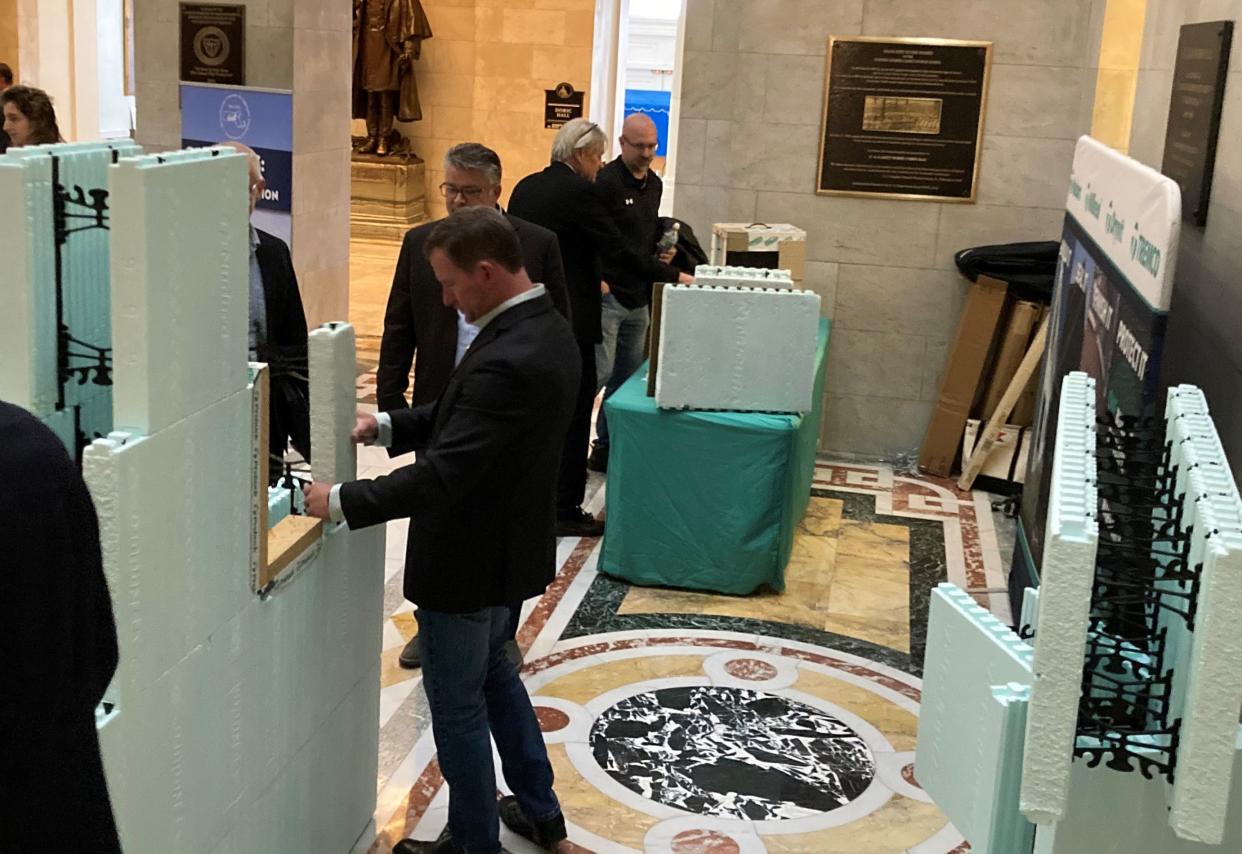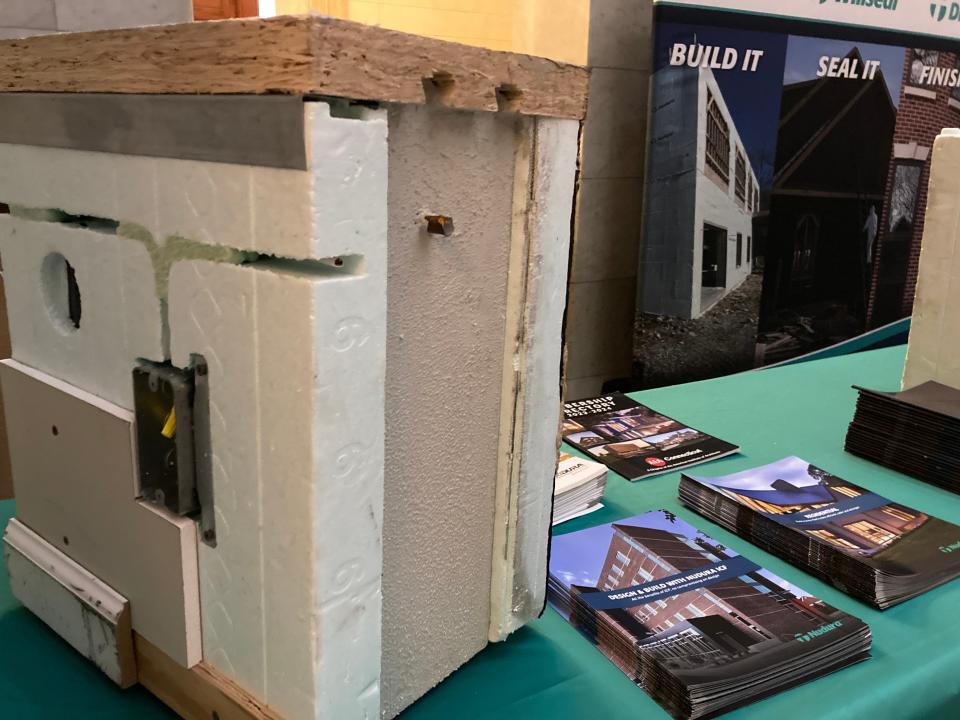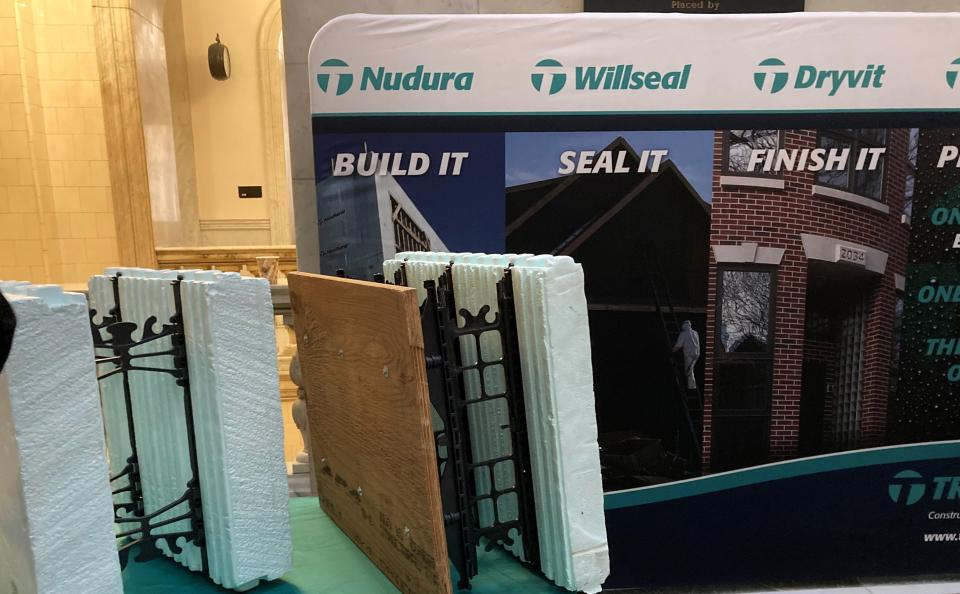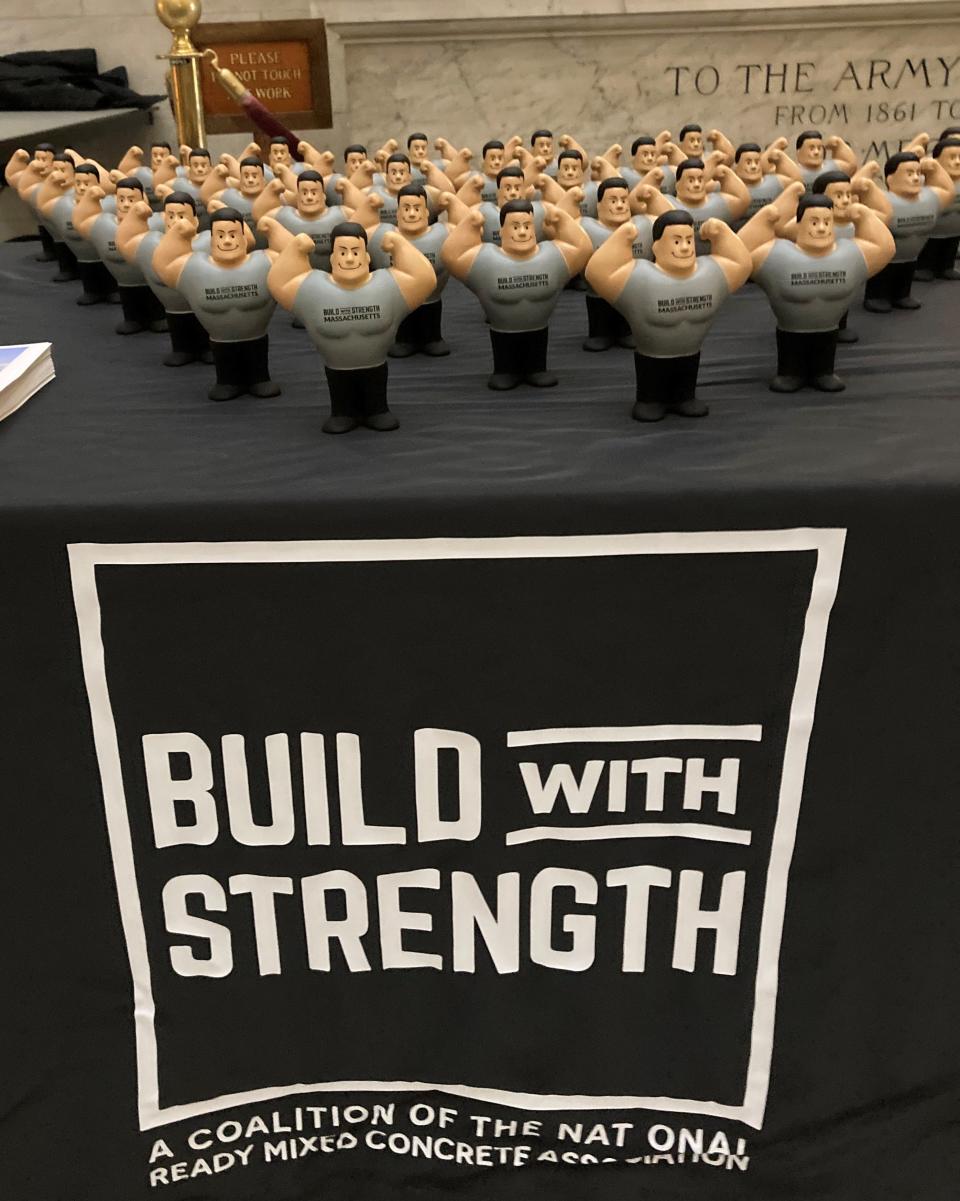Switching to concrete across construction industry could aid Mass. attain zero emissions

BOSTON - In the end, the Three Little Pigs had it figured out a long time ago: Brick and mortar, or currently rebar and concrete, make for stronger, more resilient, fire-safe and better-insulated structures for homes and offices and offer temperature-lowering features when used in walkways and highways.
That was the message lobbyists for the concrete industry relayed to legislators at a special briefing Wednesday at the Massachusetts Statehouse. Concrete construction, they said, can help Massachusetts meet its net zero emissions goals.
But what about the problem of crumbling foundations reported by many homeowners in Central Massachusetts due to the presence of the mineral pyrrhotite in the mix?
The industry is not against testing to ensure the purity of its product mix, said Craig Dauphinais, executive director of the Massachusetts Concrete and Aggregate Producers Association. “It’s too important a product not to test.
“I was appointed to the special commission investigating the issue by (former) Gov. Charlie Baker,” said Dauphinais. He said the industry is in favor of legislation that would require testing, both of mined aggregate, the sand and rocks used to make concrete, and testing foundations for the presence of the mineral at real estate transfers.
Currently, concrete companies test all the components of the product for effects on construction and overall durability, Dauphinais said, explaining that companies failed to test for pyrrhotite because the industry was ignorant of its presence in the product.
“No one knew the mineral was a problem,” Dauphinais said. “How can we test for something we don’t know exists?”

Legislation initiated by former Sen. Anne Gobi to address the issue of crumbling foundations is winding its way through the Legislature. A portion of her original bill that requires testing of quarries and aggregate for the presence of pyrrhotite was an amendment attached to the fiscal 2024 budget. It is effective as of July 2024. The portions addressing testing for the mineral at real estate transfers and for creating a special fund to support homeowners remediating the problem are still pending.
"We still have work to do," said Rep. Jon Zlotnik, D-Gardner. "We need to increase awareness in the public and with legislators and policymakers. The testing component is now law, however the remainder of the bill is still outstanding."
Not fixable in short term
It's a problem, Zlotnik noted, that is ongoing and long term, not fixable in the short term. He believes it should be treated as a natural disaster, similar to damage to structures caused by hurricanes, flash floods and wildfires.
"Homeowners are not at fault," Zlotnik said and noted that there is no one to assign liability to or with deep enough pockets to make homeowners whole and bear the costs of remediation.
The condition is not covered by homeowner insurance policies to Zlotnik's consternation. "I believe a typical homeowner would expect it to be covered in the policy they pay for," Zlotnik said. "It should be treated as a natural disaster."

Sen. Michael Moore, D-Millbury is working on passing the remainder of the legislation. He said the key to confidence in concrete use in construction is the testing component that was signed into law earlier in the year.
Dauphinias is in favor of setting up special funds, similar to how Connecticut addressed the problem, to alleviate the financial burden on Massachusetts homeowners facing the cost of removing and replacing their existing foundations. While the procedure involves some $10,000 worth of concrete, it can cost $200,000 to jack up a structure, remove and replace the foundation and mitigate the disturbance to the property.
Benefits outweigh 'bad rep'
Despite concrete’s “bad reputation” both from the tainted aggregate and the brutalist architectural style embodied by Boston City Hall, concrete has many benefits in the face of climate change and can mitigate some of the effects of global warming.

“We could get halfway to (Massachusetts’) goal of net zero emissions today if we made changes to the formula,” said Randolph Kirchain, a research scientist in the Material Systems Laboratory at MIT. “If we use different binders (the cement or glue that holds the material together) and choose our aggregate (the rocks and sand used in the mix) correctly.”
Concrete is really a composite material made with water (7%), cement or binder (13%) and fine and coarse aggregate, usually sand (36%) and rocks (44%). Changing the materials used in the mix can affect the carbon dioxide it emits. Traditionally, the CO2 is released in making the binder.
“How we change the glue, switch out Portland cement for other materials, can change how much CO2 it emits,” Kirchain said. Alternate materials for the glue, he said, include calcinated clay, natural pozzolana, a volcanic ash and even fly (coal) ash, or granulated (blast furnace) slag, produced when processing metals, and postconsumer-use ground glass.

The construction industry, Kirchain said, needs incentives and signals from legislators to make the switch to concrete in construction.
Even though concrete production can release significant levels of CO2, the lifespan of structures and infrastructure tops 100 years. It also lowers the energy costs to heat and cool a building and even lower the temperature of nearby structures if built in an urban environment.
“Concrete absorbs carbon dioxide every day that it is in existence,” Kirchain said, adding that the greater the exposed surface area of concrete, the more greenhouse gases it absorbs. It also lowers temperatures in heat urban islands through reflection and absorption of energy when used as paving material as well as in structures.
It is also more resilient in the face of natural disasters such as wind events, fire and other catastrophic occurrences.
“Concrete construction is safe, it can be a green option and makes for safe, resilient structures,” Kirchain said, adding that its use should be evaluated for all projects.
In listening to the presentation, Moore noted that it appears concrete can have long-term economic and environmental benefits for Massachusetts. He suggested state government revisit how it considers infrastructure projects; instead of opting for the lowest bidder, it should calculate the long- and short-term costs of using asphalt versus concrete.
"Sure, the costs are lower now, but how much will it cost long-term, with maintenance and upkeep?" Moore said.
This article originally appeared on Telegram & Gazette: Switching construction modes to concrete lowers CO2 emissions

